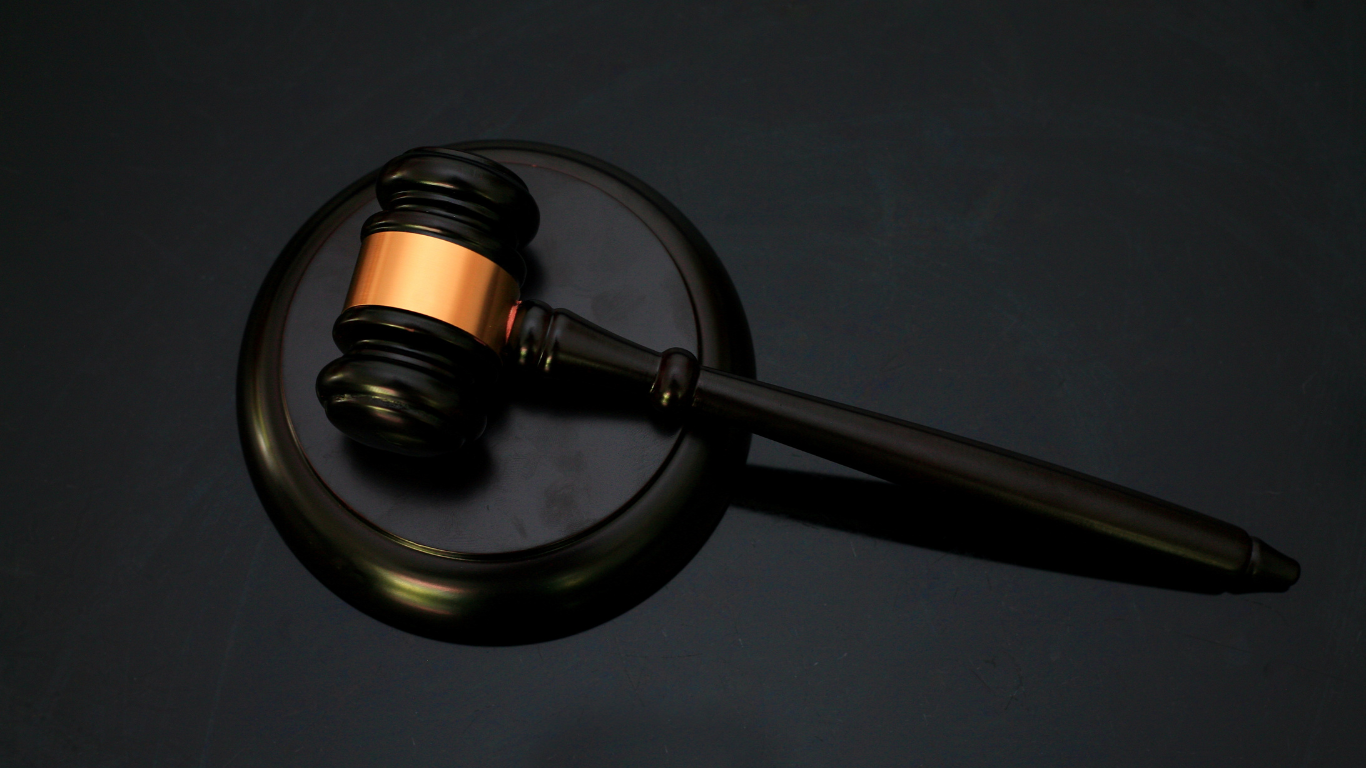Posted on April 18, 2025 | By Ashutosh Singh
Is India the world’s largest democracy, or has it morphed into a judiciocracy, where unelected judges wield unchecked power over the will of the people? This electrifying question is igniting debates across the nation, fueled by the Supreme Court of India’s controversial interventions in landmark cases like the Waqf (Amendment) Act, 2025, and other recent judgments. With the judiciary halting laws passed by elected representatives and reshaping religious and cultural landscapes, many are asking: Has the Supreme Court overstepped its bounds, undermining democracy itself? In this sensational 3,000+ word exposé, we dive deep into the heart of this constitutional crisis, dissecting the Waqf Amendment Act, critiquing the judiciary’s propriety, and exploring whether India’s democratic spirit is being eclipsed by judicial overreach. Buckle up for a thrilling journey through law, politics, and power—because the truth is more explosive than you think!
What Is the Judiciocracy Debate in India?
Picture a nation where the people’s voice, expressed through elected lawmakers, is silenced by a handful of judges. That’s the essence of the judiciocracy debate, a term that’s gaining traction in 2025 as critics question whether India’s judiciary, led by the Supreme Court, is encroaching on legislative and executive powers. Unlike a democracy, where elected representatives shape laws, a judiciocracy sees unelected judges dictating policy, overturning parliamentary acts, and even redefining cultural norms.
The Waqf (Amendment) Act, 2025, is a lightning rod in this debate. Passed by Parliament to reform the management of Waqf properties, the Act faced immediate legal challenges, with the Supreme Court stepping in to partially stay its implementation. This move, alongside other high-profile rulings, has sparked accusations that the judiciary is acting as a “super-legislature,” undermining the democratic process. From social media platforms like X to academic journals, voices are clashing over whether India remains a democracy or has slipped into a judiciocracy. Let’s unravel this seismic controversy with a focus on the Waqf Amendment Act and recent Supreme Court judgments.
The Waqf (Amendment) Act, 2025: A Flashpoint of Controversy
The Waqf (Amendment) Act, 2025, is no ordinary legislation—it’s a political and cultural dynamite that’s exposed fault lines in India’s governance. Designed to overhaul the Waqf Act of 1995, the new law aims to bring transparency, accountability, and inclusivity to the management of Waqf properties, which span 870,000 assets worth ₹100,000 crore across 940,000 acres. But its reforms have ignited a firestorm, with critics alleging it infringes on Muslim religious rights, while supporters claim it curbs corruption and mismanagement.
Key Provisions of the Waqf Amendment Act
Drawing from sources like PRS India and The Hindu, here’s what the Act entails:
- Renaming and Restructuring: The Act renames the Waqf Act, 1995, as the Unified Waqf Management, Empowerment, Efficiency, and Development Act, 1995 (UWMEED Act). It restructures Waqf governance for better administration.
- Non-Muslim Inclusion: The Act mandates non-Muslim representation in the Central Waqf Council and State Waqf Boards, a move critics argue violates the Muslim community’s autonomy under Article 26 of the Constitution.
- Gender Equality: It ensures at least two Muslim women on Waqf bodies and recognizes female inheritance rights, promoting inclusivity.
- Waqf by User Eliminated: The Act removes the judicially recognized concept of “Waqf by user,” where properties gain Waqf status through long-term religious use, raising fears of challenges to centuries-old Waqf lands.
- Five-Year Muslim Clause: Only individuals practicing Islam for at least five years can create a Waqf, a provision critics call discriminatory against recent converts.
- Enhanced State Control: District Collectors can now determine Waqf property ownership, and tribunal decisions can be appealed in High Courts, reducing the finality of Waqf Tribunals.
- Transparency Measures: The Act mandates centralized registration, auditing, and mutation procedures to curb encroachments and mismanagement, with 7% of Waqf properties currently encroached and 50% of their status unknown.
Why the Act Matters
Waqf properties, the third-largest landholding in India after the Railways and Armed Forces, are critical for Muslim religious and charitable purposes, supporting mosques, graveyards, and educational institutions. The Act’s reforms aim to address issues like the Karnataka Waqf Board land scam and the Sachar Committee’s 2006 findings of undervalued and mismanaged assets. However, its passage on April 4, 2025, with 128 votes in favor and 95 against in the Rajya Sabha, sparked protests in Murshidabad and Tripura, reflecting deep community concerns.
The Supreme Court’s Intervention: Democracy or Dictatorship?
On April 16, 2025, the Supreme Court, led by Chief Justice Sanjiv Khanna, waded into the Waqf Amendment Act controversy, issuing a partial stay on its implementation. The court halted non-Muslim appointments to Waqf Boards and Councils and preserved the “Waqf by user” provision until the next hearing on May 5, 2025. This move, coupled with the court’s handling of other recent cases, has fueled accusations of judicial overreach. Let’s examine the judiciary’s role and propriety in this saga.
The Waqf Act Ruling: A Judicial Power Grab?
The Supreme Court’s interim order on the Waqf Amendment Act has drawn both praise and ire. Key aspects include:
- Partial Stay: The court paused non-Muslim inclusions and preserved Waqf by user, arguing that these provisions could alter the character of Waqf properties. Critics on platforms like X call this a “judicial dictatorship,” claiming it undermines Parliament’s authority.
- Status Quo Order: The court directed that no Waqf properties be denotified and no new Waqf Board appointments be made, emphasizing stability during judicial review.
- Centre’s Response: Solicitor General Tushar Mehta, representing the government, argued that the Act addresses “lakhs of representations” about entire villages being claimed as Waqf, urging the court not to stay the law entirely. The court granted the Centre seven days to file a response, with petitioners given five days for rejoinders.
Petitioners, including AIMIM MP Asaduddin Owaisi, Congress MP Mohammad Jawed, and Tamil actor Vijay, argue that the Act violates Articles 14 (equality), 25 (religious freedom), 26 (religious autonomy), and 300A (property rights). They claim it discriminates against Muslims by imposing restrictions not applied to Hindu or Sikh endowments and undermines the Supreme Court’s own “once a Waqf, always a Waqf” principle from cases like K. Nagaraj v. Andhra Pradesh (1985).
Criticisms of the Supreme Court’s Propriety
The Supreme Court’s intervention has sparked a firestorm of criticism, with many questioning its propriety:
- Overstepping Legislative Authority: Posts on X and analyses from The Commune argue that the court’s stay effectively stalls a law passed by a democratic majority, raising concerns about unelected judges overriding elected representatives.
- Inconsistent Standards: Critics point out that the court’s insistence on preserving Waqf by user contradicts its own rulings, like the 2019 Ramjanmabhoomi case, which recognized the concept. Yet, it allows challenges to Hindu endowments without similar protections, suggesting a double standard.
- Delaying Tactics: The court’s refusal to grant an urgent hearing, as noted by India Today, and its scheduling for May 2025 have been criticized as delaying justice, allowing protests and uncertainty to fester.
- Public Interest or Political Bias?: Some, including BJP MP Jagdambika Pal, argue that the court’s view of Waqf Boards as administrative rather than religious bodies justifies non-Muslim inclusion, aligning with public interest. Others, like Owaisi, see it as a politically motivated attack on Muslim rights.
Other Recent Judgments Fueling the Judiciocracy Debate
The Waqf case isn’t an isolated incident. Recent Supreme Court rulings have intensified scrutiny of its role:
- Ayodhya Verdict (2019): The court’s anonymous decision to award the disputed land for a Ram temple, citing “peace and tranquility,” was praised by some but criticized for prioritizing political harmony over legal clarity, raising questions about judicial activism.
- Sabarimala Case (2018-2019): The court’s initial ruling to allow women entry into the Sabarimala temple was hailed as progressive but faced backlash for ignoring religious traditions. Its later referral to a larger bench without a stay was seen as dodging responsibility, undermining the rule of law.
- Prashant Bhushan Contempt Case (2020): The court’s ₹1 fine for Bhushan’s tweets criticizing its functioning was viewed as an overreach, stifling free speech when the government supported leniency.
- Citizenship Amendment Act (CAA) Challenges: Pending petitions against the CAA, enacted in 2019, highlight the court’s slow response to contentious laws, allowing executive actions to persist without judicial oversight.
These cases, detailed in sources like The Wire and SCC Times, suggest a pattern of the court either overreaching or selectively retreating, fueling the judiciocracy narrative.
Is India a Democracy or Judiciocracy? The Core Arguments
The debate hinges on balancing judicial independence with democratic accountability. Here’s a breakdown of the electrifying arguments:
Arguments for Judiciocracy
- Judicial Overreach: The Supreme Court’s frequent stays on parliamentary laws, like the Waqf Amendment Act, suggest it’s acting as a super-legislature. X posts lament that “unelected milords” decide policy, bypassing the people’s mandate.
- Undermining Parliament: By halting the Waqf Act’s implementation, the court is seen as disrespecting the democratic process, especially since the Act was debated extensively and passed with a majority.
- Inconsistent Rulings: The court’s selective application of principles, like recognizing Waqf by user in some cases but questioning it in others, raises doubts about its impartiality.
- Public Sentiment: Social media reflects growing frustration, with hashtags like #SupremeCourtOfIndia trending alongside claims that India is no longer a democracy but a “judicial dictatorship.”
Arguments for Democracy
- Judicial Review as a Pillar: The Constitution, under Articles 13 and 32, empowers the Supreme Court to review laws for constitutionality, a vital check on majoritarian excesses. The Waqf Act’s stay protects minority rights under Articles 25 and 26, as argued by petitioners.
- Protecting Fundamental Rights: The court’s intervention ensures laws don’t violate equality (Article 14) or religious freedom (Article 25), especially when they discriminate, as alleged in the Waqf Act’s five-year clause.
- Temporary Measures: The partial stay on the Waqf Act is an interim order, not a final ruling, allowing the court to balance public interest and constitutional principles while hearing both sides.
- Historical Precedent: Landmark cases like Kesavananda Bharati (1973) established the judiciary’s role in safeguarding the Constitution’s basic structure, ensuring democracy thrives.
The Propriety of the Supreme Court: A Critical Lens
The Supreme Court’s propriety—its adherence to fairness, impartiality, and constitutional limits—is under scrutiny. Critics argue:
- Lack of Transparency: Anonymous judgments, like in Ayodhya, and delayed hearings, as in the Waqf case, erode public trust. The Supreme Court Bar Association’s request for live-streaming the Waqf hearings reflects demands for openness.
- Selective Activism: The court’s boldness in staying the Waqf Act contrasts with its hesitancy in cases like CAA, suggesting political influences or inconsistent priorities.
- Impact on Minorities: The Waqf Act’s stay is seen by some as protecting Muslim rights, but others argue it fuels perceptions of judicial bias against majority-supported laws, deepening communal tensions.
- Judicial Legislation: As noted in SCC Times, the court’s history of issuing directives, like in the red beacon case, shows it filling legislative gaps, but critics warn this risks overstepping into policy-making.
Supporters counter that the court’s actions are constitutionally mandated, with Article 141 making its rulings binding and Article 144 empowering it to ensure compliance. The Waqf stay, they argue, upholds secularism and minority protections, core to India’s democratic fabric.
The Waqf Amendment Act: Constitutional and Social Implications
The Waqf Amendment Act’s legal battle has far-reaching implications:
- Constitutional Violations: Petitioners, including Owaisi and the DMK, argue that the Act breaches Articles 14, 25, 26, and 300A by imposing discriminatory restrictions and undermining Muslim autonomy. The removal of Waqf by user could lead to a “floodgate” of challenges to historic Waqf properties, violating the “once a Waqf, always a Waqf” principle.
- Social Tensions: Violent protests in Murshidabad, where two died, and Tripura highlight the Act’s polarizing impact. The Supreme Court’s stay aims to calm tensions, but delays risk further unrest.
- Transparency vs. Autonomy: The government defends the Act as a transparency measure, citing 21 lakh acres claimed as Waqf post-2013. Critics see it as state overreach, weakening Waqf Boards’ independence.
Solutions: Balancing Democracy and Judicial Oversight
To resolve the judiciocracy debate and ensure the Supreme Court’s propriety, India needs a balanced approach:
- Strengthen Judicial Accountability: Establish clearer guidelines for judicial review to prevent overreach. Live-streaming hearings, as requested for the Waqf case, can boost transparency.
- Legislative Clarity: Parliament should draft laws with robust constitutional safeguards to minimize judicial intervention. The Waqf Act’s vague five-year clause could have been better defined to avoid challenges.
- Public Dialogue: Platforms like the NJ AI Hub could host debates to educate citizens on judicial roles, reducing misinformation on X and fostering trust.
- Timely Judgments: The Supreme Court should prioritize urgent cases like Waqf to prevent social unrest, as delays exacerbate tensions.
- Inter-Institutional Cooperation: The judiciary, legislature, and executive must collaborate to uphold the Constitution’s checks and balances, ensuring no branch dominates.
The Future: Democracy or Judiciocracy?
The Waqf Amendment Act saga and recent Supreme Court rulings are a litmus test for India’s democracy. If the court continues to stay parliamentary laws without clear justification, the judiciocracy narrative will gain traction, eroding public faith. Conversely, unchecked legislative majoritarianism risks trampling minority rights, necessitating judicial oversight. The May 5, 2025, hearing on the Waqf Act will be pivotal, potentially shaping India’s constitutional landscape for decades.
Why This Matters to You
Whether you’re a student of law, a concerned citizen, or a global observer, the Is India a Democracy or Judiciocracy? debate is a wake-up call. The Waqf Amendment Act’s fate will influence how India balances religious autonomy, state control, and judicial power. It’s not just about Waqf properties—it’s about whether India’s democracy can withstand the tug-of-war between elected lawmakers and unelected judges.
Don’t stay on the sidelines. Dive into the conversation by exploring the NJ AI Hub’s resources, engaging with legal experts, or sharing your views on platforms like X. Visit supremecourt.gov.in for case updates, and join the movement to shape India’s democratic future.




